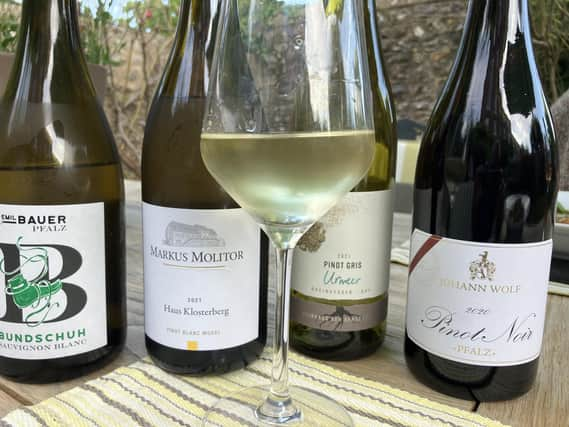It’s time to rediscover the wines of Germany


Ripe grapes plus yeast equals wine plus carbon dioxide is the simplest of equations. Even some vine growing areas have existed for centuries on the same sites, particularly in Europe.
But change is constant, whether it be in winemaking or vine growing and two major factors have great effect – leaving aside climate change for the moment.
Advertisement
Hide AdAdvertisement
Hide AdThese factors are Technology and Fashion. Modern technology has brought about great improvements in quality for winemaking across the globe and technological advancements in machinery and mechanised tools has been beneficial in the vineyards.
Fashion, on the other hand, whilst not directly affecting quality, can result in substantial changes in terms of production of wines. Some of the problems of changing consumer trends result from the legacy of what went before newer wines which appear on the market.
Such is, I believe, the case with German wines. Many of us, certainly from my generation, remember the German white wines of the seventies – Liebfraumilch, Piesporter, Niersteiner, etc, mostly sweet or demi-sec and mostly lacking character.
Hugely popular at the time since there were far fewer other wines to choose from, as tastes changed and palates became more sophisticated, drier white wines were sought and German wines got left behind on the UK market. Sadly, many still believe that they shouldn’t be caught drinking German wines for fear of being pilloried by their peers, believing the wines to be the same as in the 1970’s.
Advertisement
Hide AdAdvertisement
Hide AdNothing could be further from the truth and the modern wines of Germany should now certainly feature in any wine lover’s choice and can be perfect wines for summer drinking. Here are four recommendations to get you back thinking about wines from Germany.
Sauvignon Blanc 2021 Bundschuh made by Emil Bauer in the Pfalz region is fresh, fruity and spritzy, with gooseberry undertones. Neither Loire nor New Zealand, it has a Sauvignon character of its own and is particularly good paired with Asian cuisine. £18.95 online from Drinkmonger.
A very different but equally delicious white is Pinot Blanc 2021 Haus Klosterberg Marcus Molitor from the Mosel. Beautifully balanced ripe fruit with some sweetness in a demi-sec style, this is an elegant, well-made wine with good depth of flavour and clean finish, great with cold cuts. £15.72 from Vinissimus.
The last two are both available more readily from Waitrose. From the Rheinhessen region comes Weinhaus Pinot Gris 2021 Urmeer, dry, fresh, fruity and eminently quaffable. Great value at £8.99. From the Pfalz region again, is a light summery red which can be served cool or even slightly chilled. Johann Wolf Pinot Noir 2020 has a wonderful morello cherry character, fresh, fruity and medium-bodied with a slightly smoky aroma and flavour. Delicious with Thai and Asian cuisine or chicken salad, with surprising richness and depth for a Pinot at £9.99.